Introduction:
Peach tree seed planting is a fun and rewarding way to bring some nature into your yard. Yes, you can grow your own peach tree from the seed inside a fresh peach. You can grow a peach tree from seed and get a healthy tree that will eventually give delicious peaches, but it requires time and some basic understanding. This project is great for gardeners who are delighted to see their hard work turn into something beautiful.
A peach tree cannot just be planted in the ground. If you follow the right procedures and put in some work, you can grow a peach tree that will look fantastic in your yard and provide you with delicious fruit for many years to come. Although it might take several years for your peach tree to produce fruit, watching it develop from a seed to a tree is incredibly rewarding. In the following sections, we’ll walk you through the process of planting, caring for, and eating peaches from your own tree.

Getting Started with peach seed planting
Growing peaches from seed is quite different than buying a grafted tree from the nursery. You might not get fruit from your seed grown tree that taste exactly like the parent peach, but it will be truly yours. This complete guide will take you through every step in the process from selecting the right pit, to caring for your mature tree.
Tip Box: Seed grown peach trees usually take 3-4 years to produce fruit, so patience is a virtue! However, the satisfaction of eating peaches from a tree that you grew yourself, makes the wait worth it.
Choosing the Right Peach Pit
There are multiple peach pits to get started from when it comes to actually planting peach seeds. Your journey starts by choosing the right peach pit off the right peach. Here is what to know about getting that part of the game right.
Select Local or Heirloom Varieties
The best pits for peach planting come from locally grown, heirloom varieties, instead of peaches from the grocery store. Local peaches have already adapted themselves to your climate, and giving your seedlings the best possible chance. Heirloom varieties are also more likely to produce viable seeds than hybrid varieties.
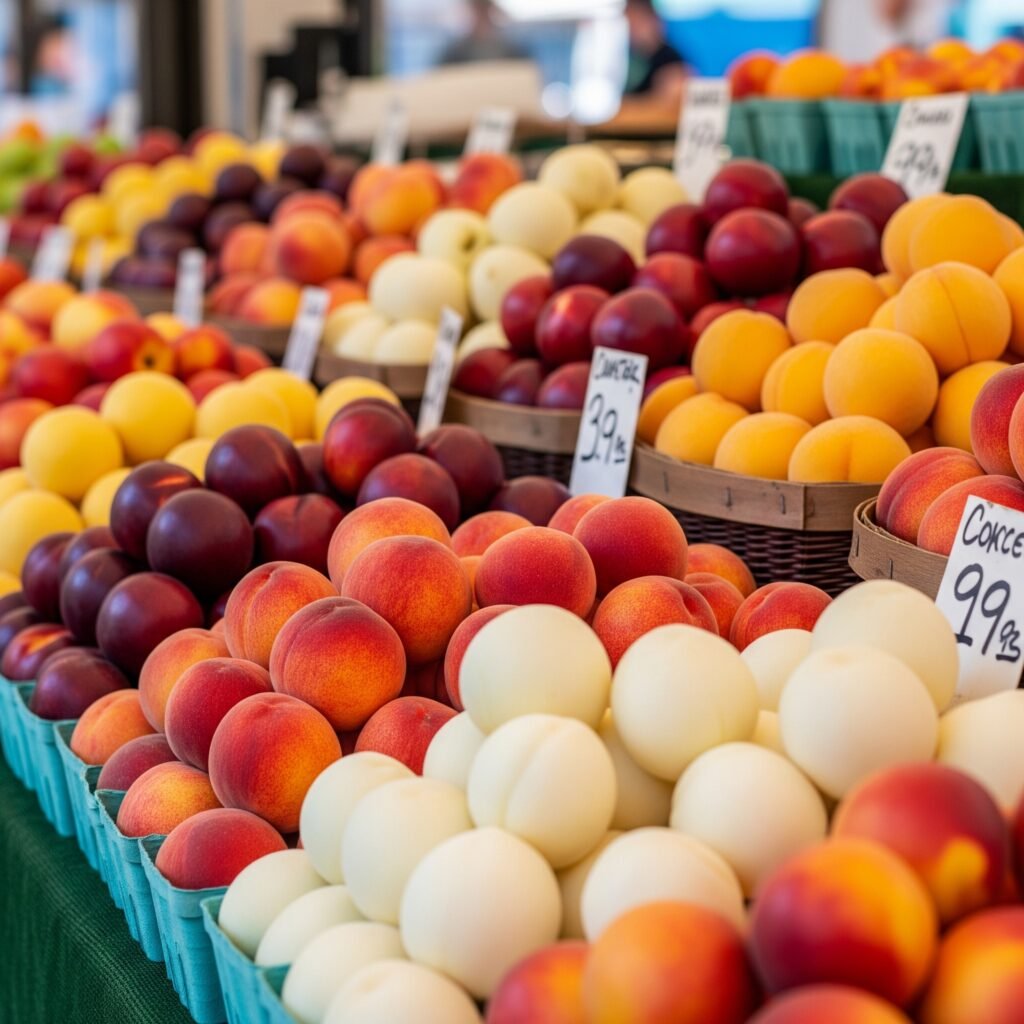
Avoid Hybrid Peaches
A number of commercial peaches are in fact hybrids, which may mean that the seeds will not grow true to type, or may not germinate at all. If you are obligated to use peaches from the supermarket, try to use organic, or heirloom. The idea is to find peaches that were not treated with growth inhibitors.
Fresh is Best
When using a peach pit for planting, use fresh, ripe peaches; not dried or processed peaches. The seed can be plump and healthy looking. Avoid pits that are cracked, moldy, or that have been laying around for weeks.
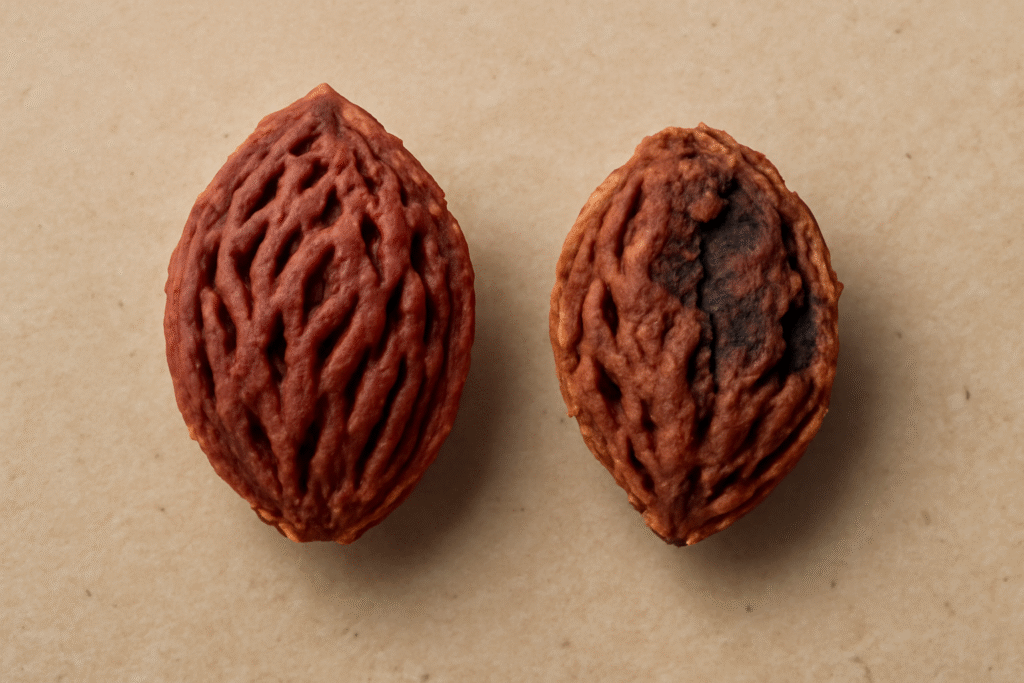
Preparing Your Peach Seed for Planting
Once you have identified your peach pit, it’s important to prepare the pit so that you can plant the seed from the pit. This process includes cleaning, retrieving, and sometimes cracking open the seed, which can help with the germination rate.
Cleaning your pit
The first task is to remove all the flesh off of the pit. A scrub brush may be used with cool water to remove all the fruit. Most of all, don’t leave any fruit on your pit. If you leave fruit on your pit this may attract mold or some other form of bacteria that could harm your seed. Some gardeners even soak their pits in water for 24 hours to facilitate the cleaning.
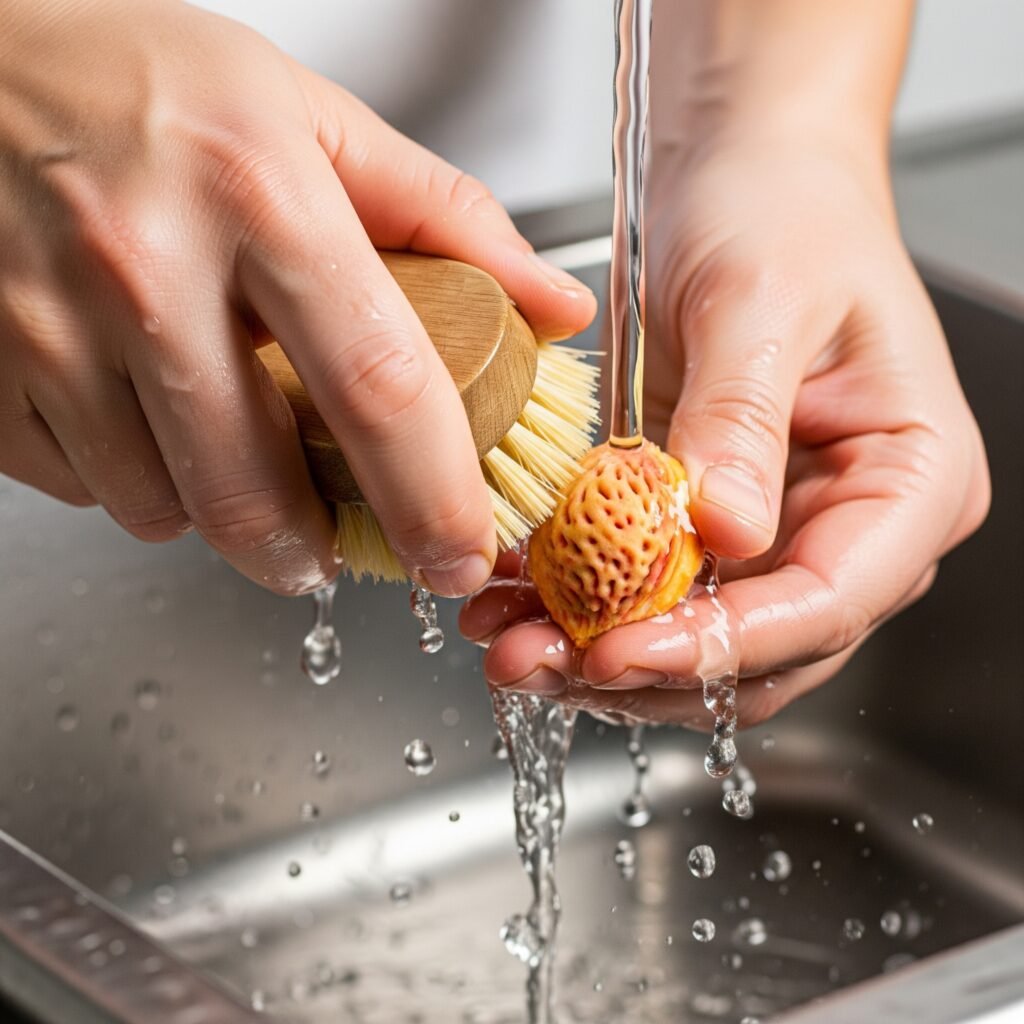
Extracting the Seed (Optional)
You can either plant the entire pit or take the seed out from inside the pit. If you take out the seed (also called cracking the pit), it may speed up germination. Cracking the pit requires some caution to avoid damaging the seed inside. Use a nutcracker, or a hammer, or tap it with a hammer to gently crack the hard shell, so you can remove the almond-shaped seed.
Warning Box: Be super careful when you crack the pit! The seed inside is fragile, and it is easy to ruin it. If you are not confident – it is better to just plant the whole pit.
Inspect Your Seed.
Regardless of whether you extract the seed or leave it in the pit, it is important to inspect it very carefully. A viable seed should be:
• Plump and full-looking
• Not have cracks or holes
• Light brown or tan in color
• Firm by feel
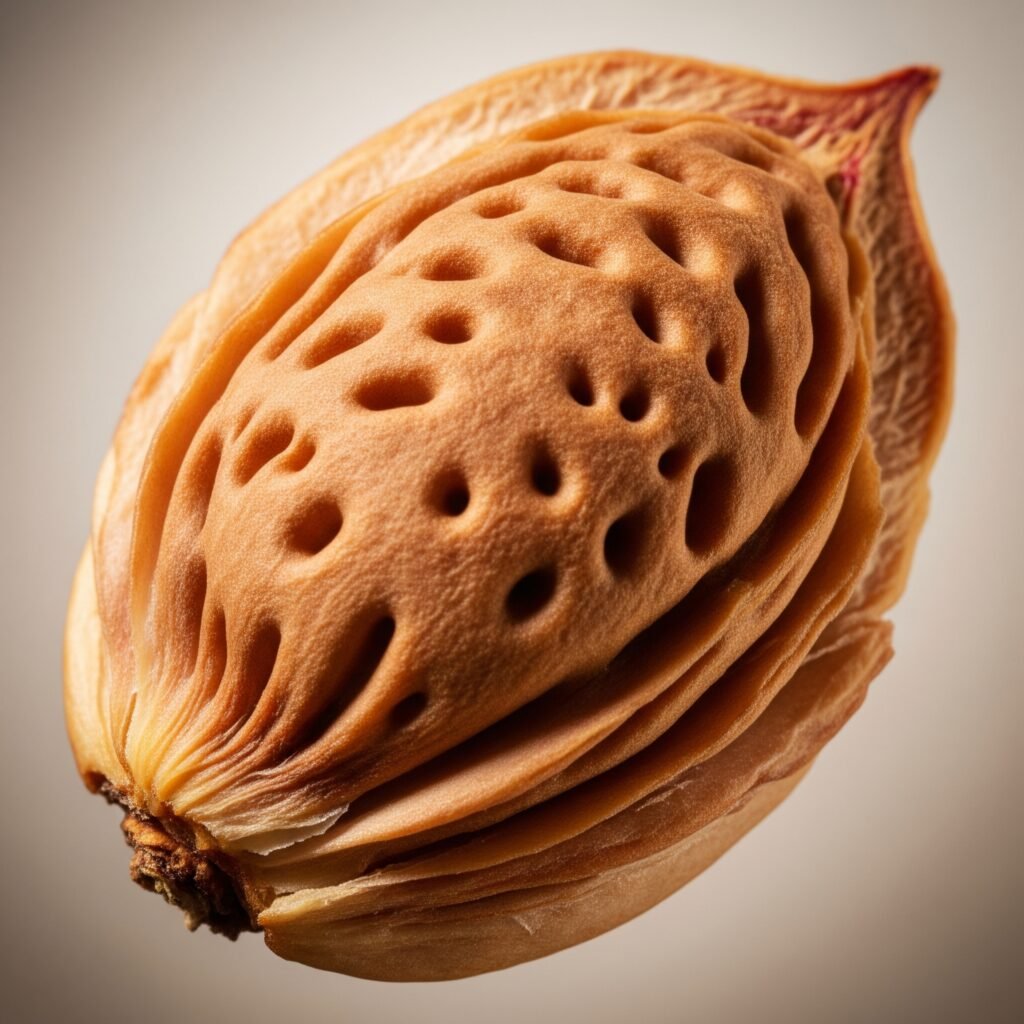
Peach seed planting requires stratifying the seed. This cold treatment simulates winter and helps to break the seed’s dormancy so that germination can occur when the seed is planted. If a seed was not properly stratified, it probably will not sprout.
Understanding Why Stratification Works
In nature, peach pits fall to the ground in autumn and are subjected to several months of cold (and moist) conditions before temperatures start warming up the following spring. The extended cold period tells the seed it’s gone through winter and it’s time to germinate. We can try to mimic this process manually with stratification.
The Stratification Method
This is how you stratify your peach seeds:
1. Prepare the medium: mix equal portions of peat moss and vermiculite together or use damp sand.
2. Moisten the mixture: It should be evenly moist but not soaking wet.
3. Add your seeds: Put clean pits or extracted seeds in the mixture
4. Seal in containers: Place in plastic bags or containers with tight fitting lids
5. Refrigerate: Store at 35-40°F (2-4°C) for 10-14 weeks
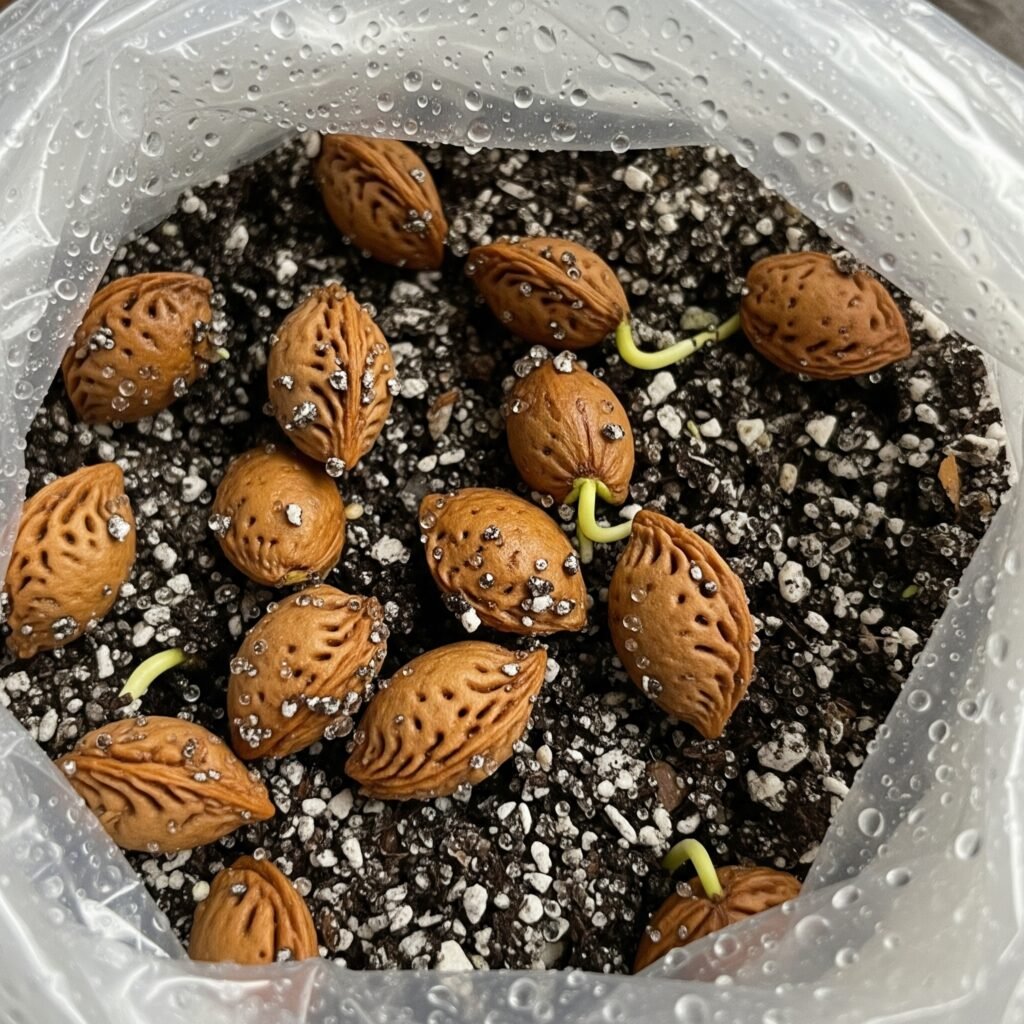
Monitoring During Stratification
You will want to check your seeds about every 2-3 weeks during stratification. The medium should remain consistently moist but not saturated. It is not unusual for some seeds to crack or even begin to sprout at this point – in fact, that’s a good thing!
Tip Box: Put the date that you start stratifying your peach seed on your container so you’ll know when to plant the seed.
Planting Your Peach Seed
After successful stratification, now comes the fun part – planting your peach seed! Good planting technique and timing are crucial to helping your young seedling get a good start.
Timing Your Planting
Sow your stratified seeds in late winter or early spring, usually 2-3 weeks before your last frost date. This gives the seedling enough time to grow before the hot summer sets in.
Selecting the Pots
First plantings require a container at least 12 inches deep with drainage holes. Terra cotta pots are good as they allow air circulation to the roots. One seed per container—Prevents root competition.
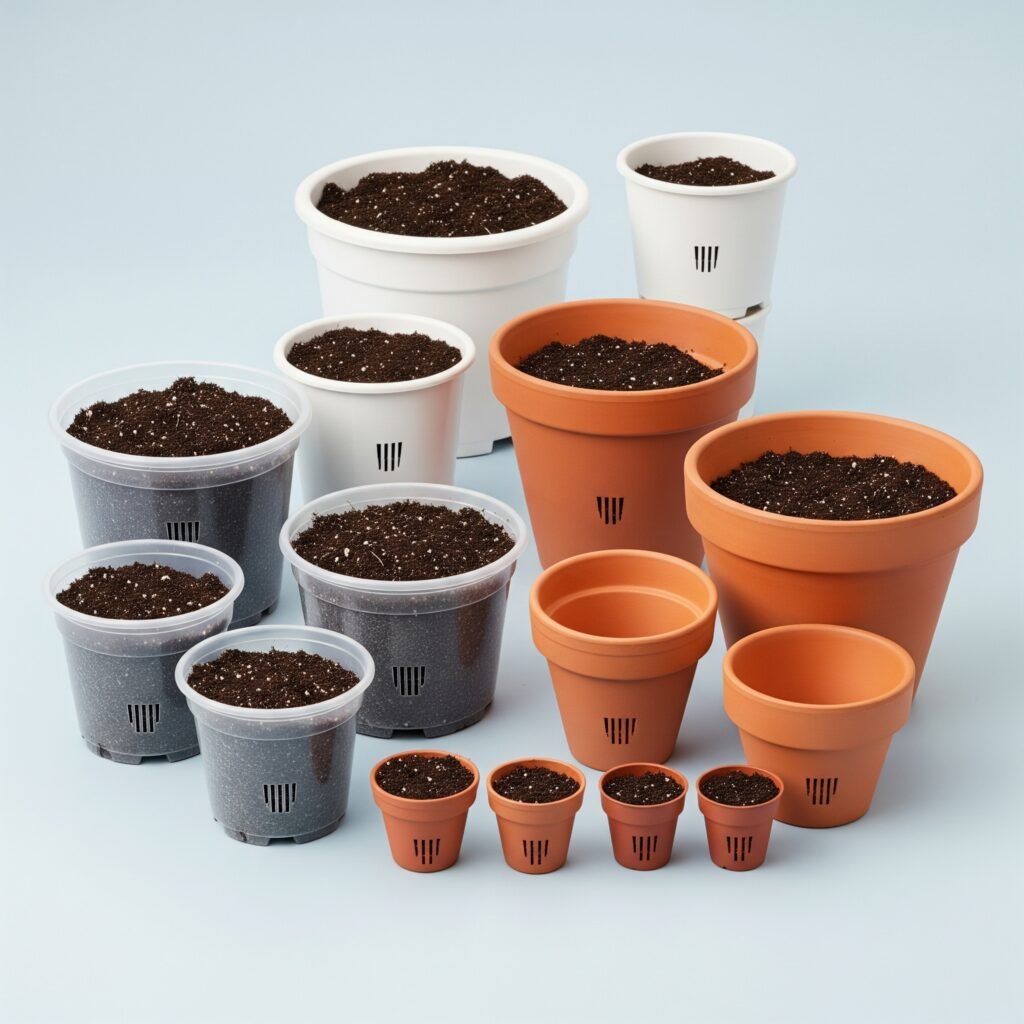
Planting Steps
1. Fill containers: Use high-quality potting mix, not garden soil
2. Planting depth: For whole pits, plant 1-2 inches deep
3. Orientation: If using whole pits, plant them on their side
4. Watering: Water lightly, keeping the soil consistently moist but not soggy.
5. Location: Keep in a warm area with indirect sun exposure.
Soil Requirements
Use a high quality, commercial potting mix for planting in containers. Ensure the soil is well drained, nutrient rich with pH between 6.0-7.0. Do not use heavy clay soils or mixes that retain excessive moisture.
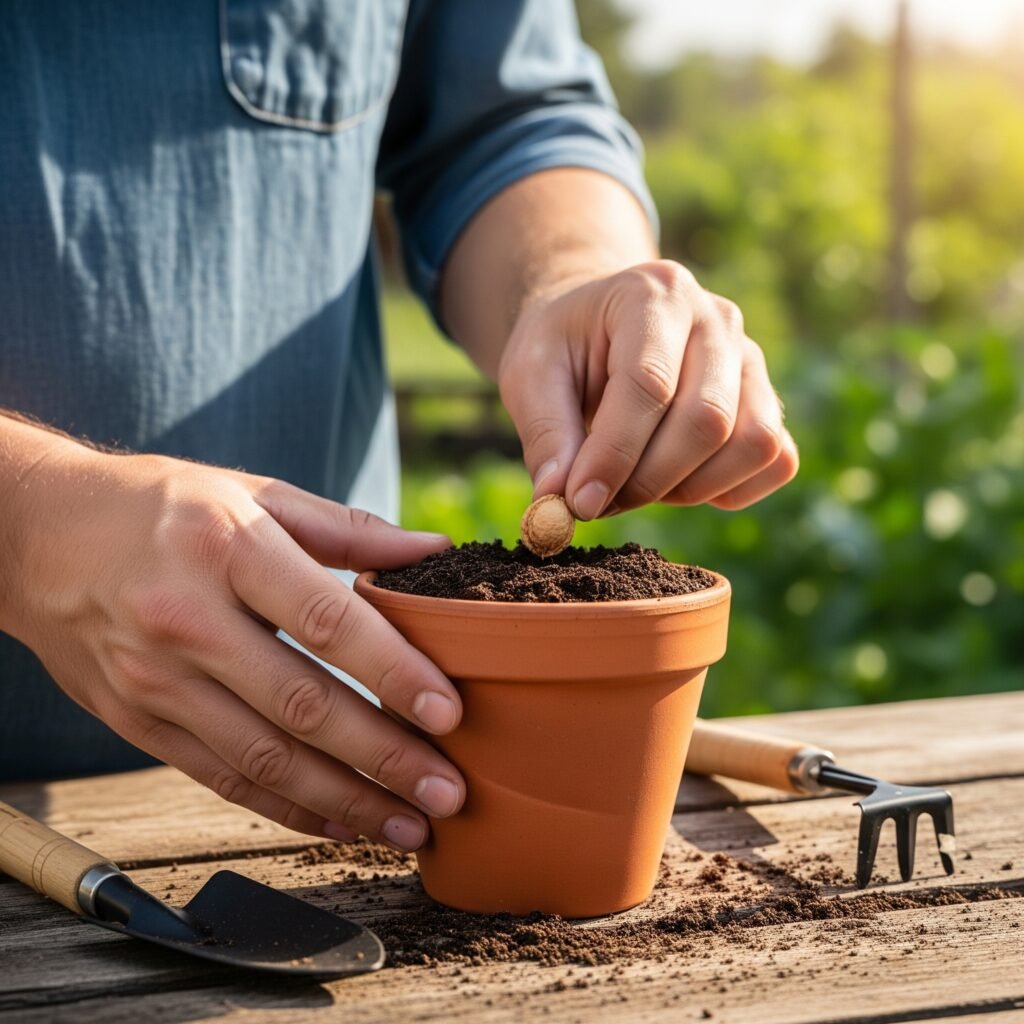
Planting a peach seed is very easy and anyone can do it. You don’t need any tools or even garden space. Everything you need to start growing your tree is commonly found around most homes.
Taking care of your peach seedling
Once your peach tree seeds have sprouted, you need to take good care of them so they grow well. Peach seedlings are fragile and need constant care to grow well.
Germination Schedule
When you plant stratified seeds, you should see them sprout in 4 to 8 weeks. A little green stem coming up from the ground will be the first sign. It’s natural for some seeds not to sprout, so don’t be discouraged.
How Much Water It Needs
Make sure the soil stays moist but not too wet. Young seedlings are quite sensitive to both too much and too little water. To see if the soil is dry, stick your finger in it every day. If it feels dry an inch below, it’s time to water.
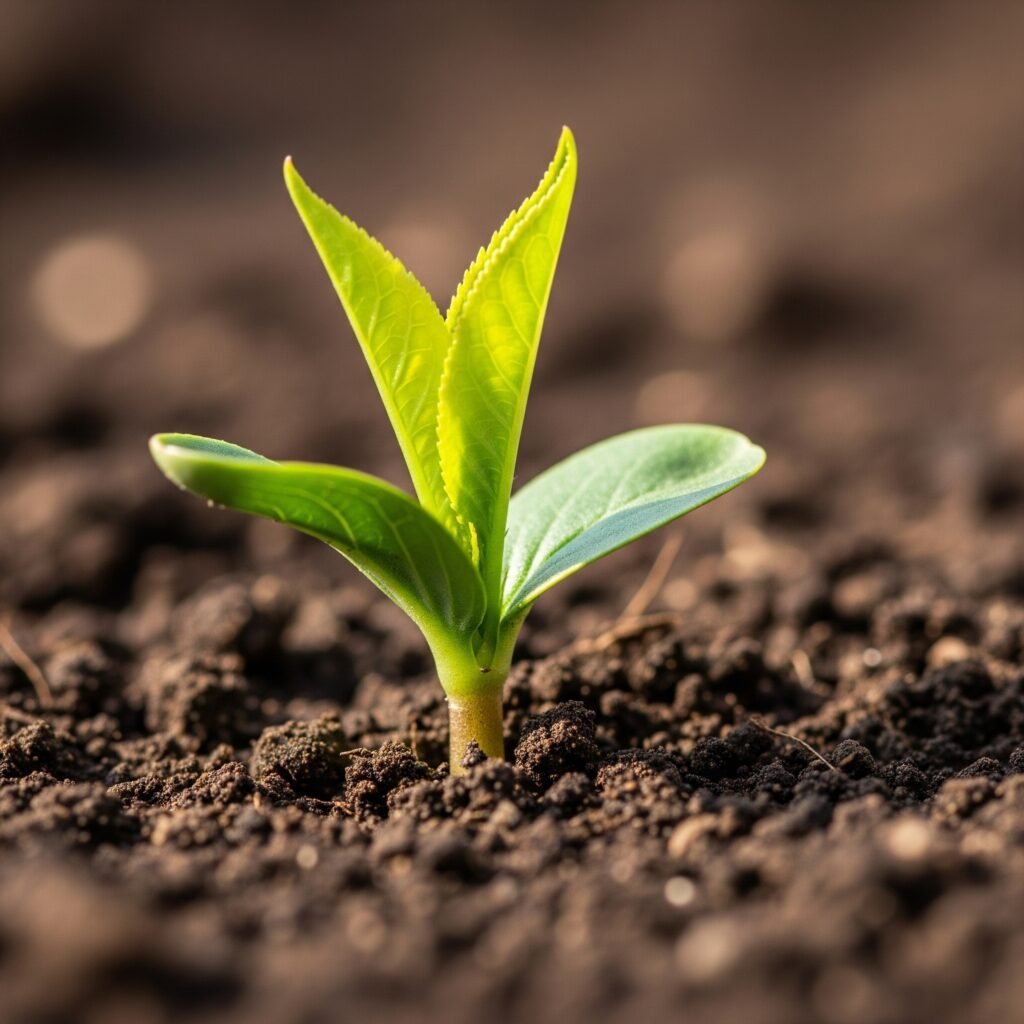
Light Requirements
Sow seedlings in bright light or full sun and move them to direct sunlight as soon as they’ve produced several leaves. Too little direct sun results in spindly plants; too much can scorch the foliage of seedlings.
Fertilizing Young Plants
Start fertilizing when seedlings are 2 to 3 inches tall. For the first application, use a well-balanced fertilizer (for example: 10-10-10) and apply it at half strength. Continue using this diluted mixture once every two to three weeks during the growing season. Be careful not to over-fertilize – especially with nitrogen-rich products – because your plants will produce nothing but leaves!
Tip Box: Look for the first set of true leaves (they’ll look different than the initial seed leaves, or cotyledons) to know when your seedling is ready for a little more TLC.
Protection From Pests
Young peach seedlings may become infested with aphids, spider mites or other small pests; check plants often and apply insecticidal soap or neem oil if necessary.
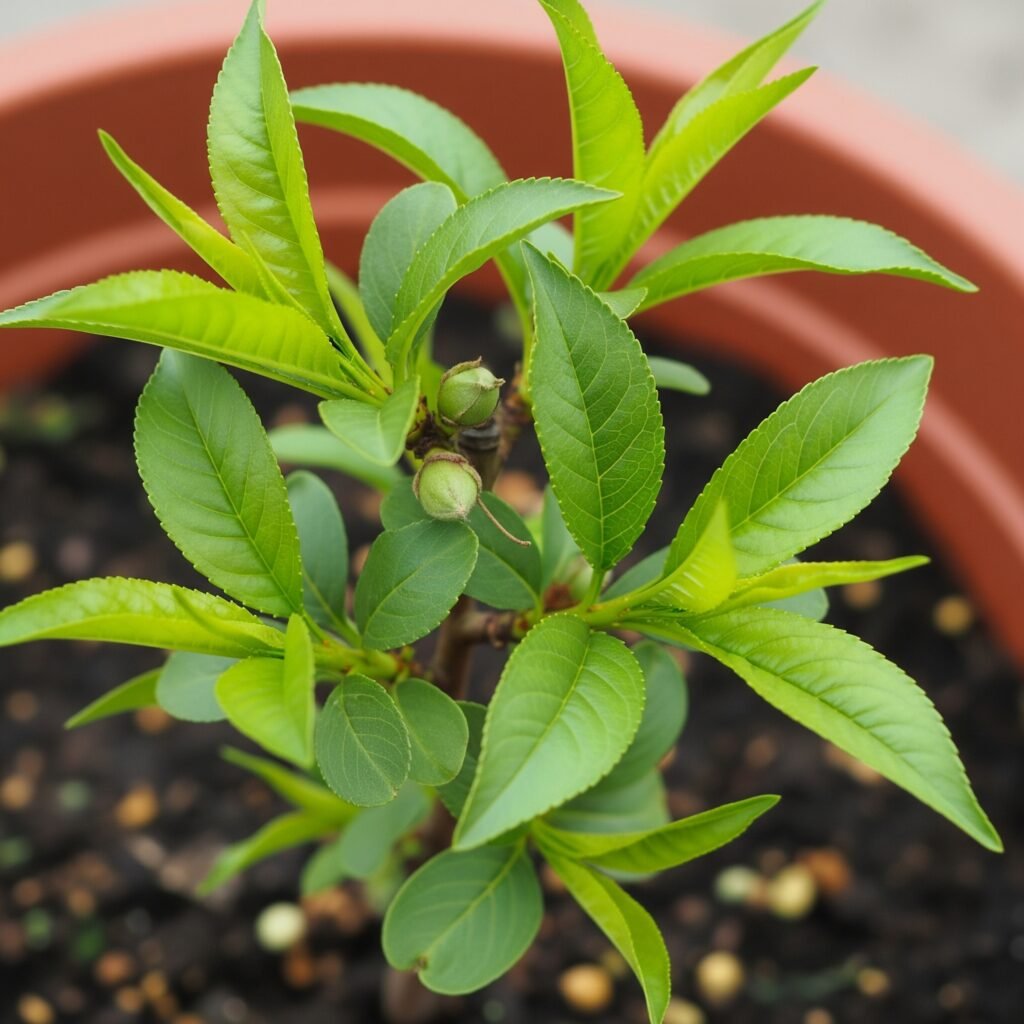
Transplanting and Long-Term Care
As your peach seedling grows, it will eventually need transplanting to a larger container or directly into your garden. This is a crucial step in peach tree seed planting success.
When to Transplant
Transplant your seedling when it outgrows its container. Most likely you’ll want to do this when it’s around 8-12 inches tall or if you start seeing roots coming out of the drainage holes, which will probably be anywhere from 3-6 months after germination.
Choosing The Right Location
Choose a sunny location with well-drained soil. Peaches need 6-8 hours of direct sunlight each day and do not like wet roots. Be sure to also take into account the mature size when you are deciding on a location as peaches trees can get 15-20ft tall and wide.
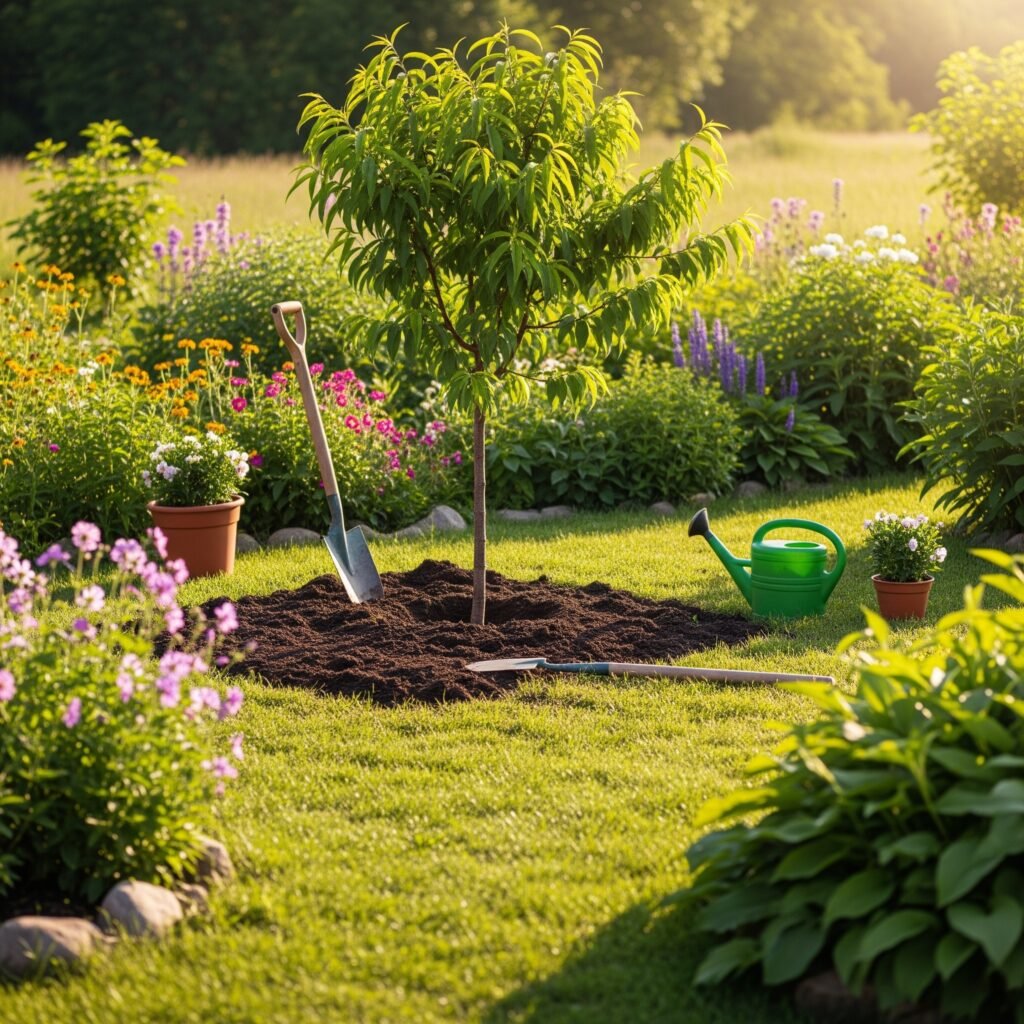
Process of Transplantation
1. Prepare the hole: Dig a hole twice as wide as the root ball
2. Improve soil: Mix in compost if soil is heavy clay
3. Handle carefully: Be gentle when removing the seedling from its container
4. Plant at same depth: Do not plant the stem deeper than it is in the pot
5. Water thoroughly: Give the transplant a good drink
Long Term Care Essentials
Regular care and maintenance is essential for established peach trees to produce and thrive:
• Watering: Deep, infrequent watering ensures that the root system thrives.
• Mulching: Spread 2-3 inches of organic mulch around the tree’s base
• Pruning: Prune your apple tree every winter when it is dormant to help maintain its shape and to remove dead, diseased or damaged branches
• Fertilizing: Feed in early spring with a balanced fertilizer.
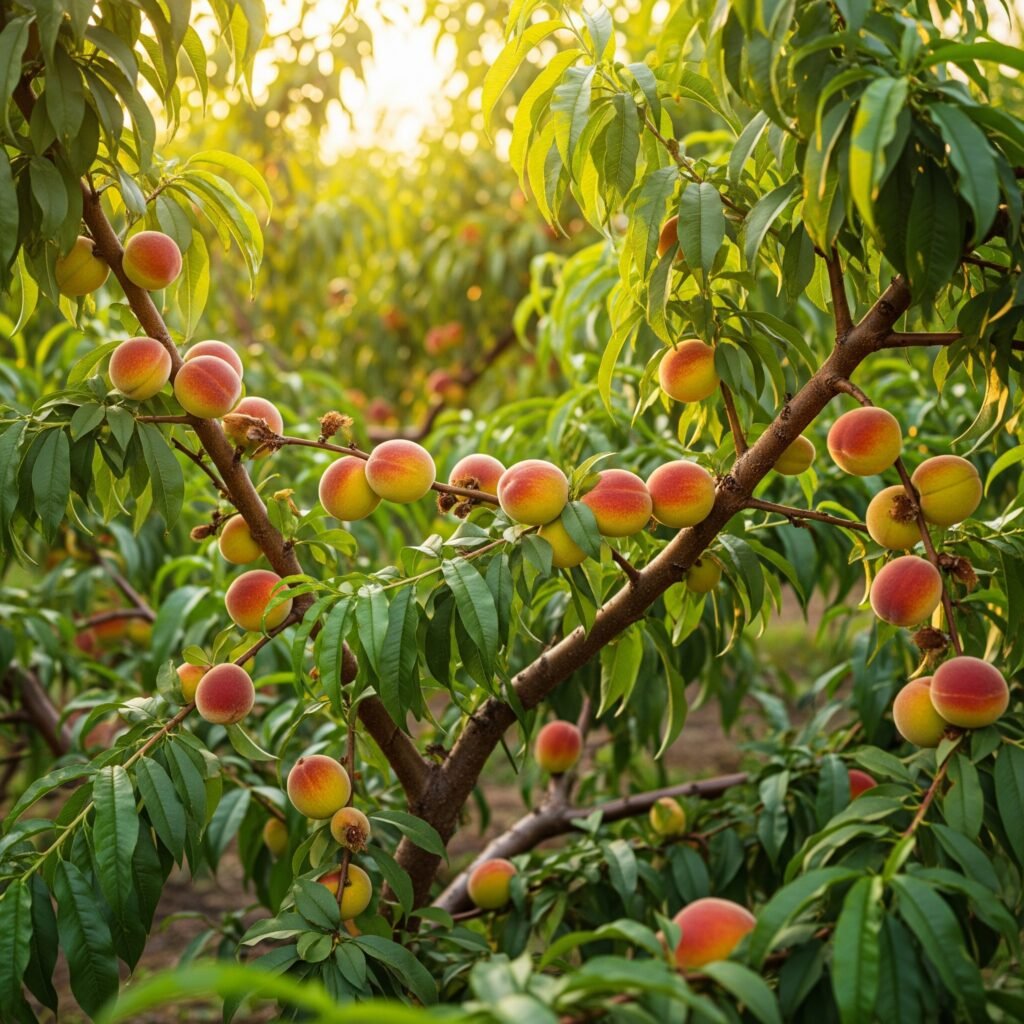
Warning Box: They say “Patience is a Virtue!” This certainly holds true for trees grown from seeds. Trees grown from seed can take 3 – 4 years before you will see any fruit, and the fruit may be different than that of the parent tree. That’s all part of the fun when you grow from seed!
Common Problems and Solutions
Even with careful peach tree seed planting, there can be problems. The most common are:
Seeds won’t germinate
Even seeds purchased from a reputable nursery or seed company sometimes fail to germinate.
Problem: Seeds planted correctly but nothing sprouts after 8-10 weeks.
Solutions:
• Check stratification time – seeds may need longer cold treatment
• Make sure the soil temperature is warm enough (60-70°F)
• Make sure the soil isn’t too wet or dry
• Try cracking the pit if you planted whole pits
Seedlings are weak or leggy
Problem: Plants grow tall and spindly with few leaves.
Solutions:
• Gradually move plants to an area where they will receive direct sunlight.
• Make sure that the plant is getting only adequate fertilizer and not excess forcing
• Check for proper air circulation.
• Think about transplanting into larger container
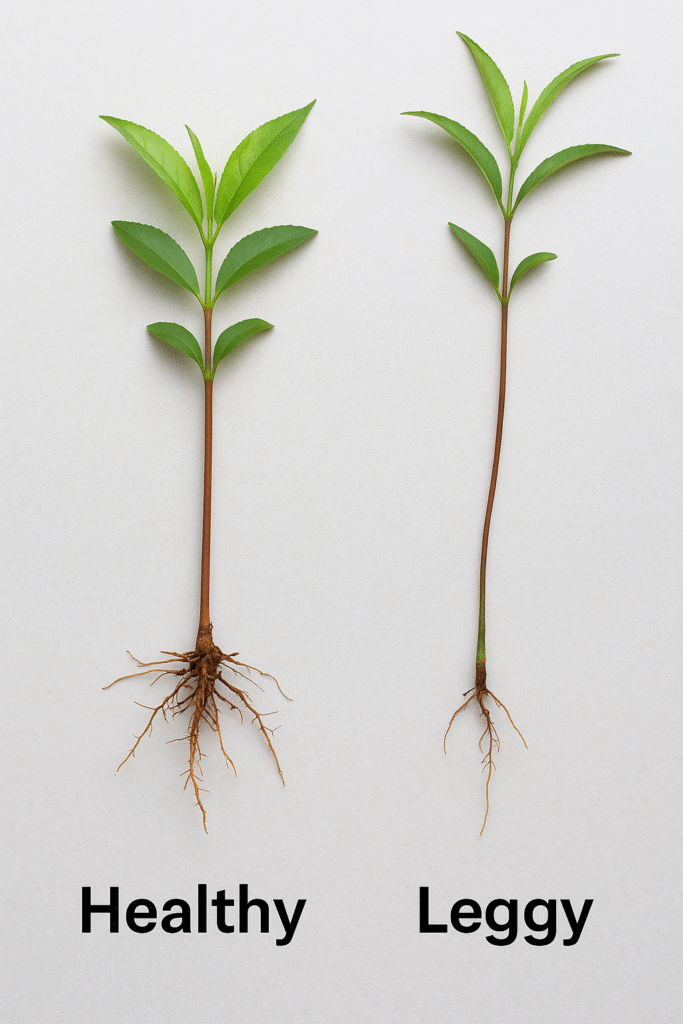
Leaf Problems
Problem: Yellowing leaves, brown spots, or wilting.
Solutions:
• Adjust watering schedule
• Look for pests such as aphids or spider mites.
• Make sure you have good drainage.
• Test your soil’s pH level and adjust if needed
Slow Growth Issue:
Problem: The seedling isn’t growing as fast as it should be.
Solutions:
• Make sure we are getting enough sunlight (6+ hours per day).
• Check the nutrients in the soil and add fertilizers if needed.
• Check if the water is at the right amount.
• Consider container size, perhaps it needs to me moved.
Tip Box: Keep a garden journal to track the progress of your seedling, fertilization, watering, and take note of any problem you observe. You get to know what works best in your own growing environment.
Conclusion
Engaging in the process of peach tree seed planting establishes a connection with the natural world and possibly yields delicious homegrown fruit for many years. Although it requires patience and precision, growing your own peach tree from seed is a gratifying experience like no other.
Remember, you can’t expect success unless you begin with good seed, provide the necessary pre-planting conditions, and then stick with it. You’ll have a tree that doesn’t exactly duplicate its parent’s fruit — but will be yours, nurtured through your efforts and care in the garden!
Are you convinced? Grab your supplies and follow these step by step instructions to start growing paradise of your own. Soon enough, you’ll have beautiful shade, pretty blooms and juicy peaches for the whole family.
FAQ
How long does it take for a peach tree seed planting to bear fruit?
Peach tree seed plantings usually take three to four years before they produce fruit, although it can sometimes take up to five years. The length of time depends largely on the growing conditions, care, and variety of peach. Fruit produced by a seed grown tree often is different from that of the parent peach.
Can I plant peach seeds directly in the ground?
Yes, you can put plant your peach pit right in the ground outside during the fall months and let nature do the chilling work for you. However, your success rate will likely be much lower using this method than with using the controlled stratification method. If you do decide to use this method, make sure to pick a protected area and mark where it is planted as it will not germinate until spring.
What is the success rate of peach tree seed planting?
Success rates for peach tree seed planting typically average between 30-70%, so it is best to plant a few of them to up your chances. Several factors come into play here, including but not limited to the quality of the seeds you use, how long they were dried or stored before you stratify them, if you prepared them properly for stratification, and if the conditions were right for germination.
Do I need to graft my seed-grown peach tree?
You do not have to graft a seed grown peach tree. However, it will not grow the same fruit as your original peach did. To do that you would need to purchase a grafted tree from a nursery. I love growing something and waiting to see what you get!
When is the best time to start peach tree seed planting?
The best time to begin peach tree seed planting is in late summer or early fall when fresh peaches are available. Start stratification in fall so seeds are ready to plant in late winter or early spring when temperatures begin to rise, but not too soon since seeds will sprout and need light for growing.

